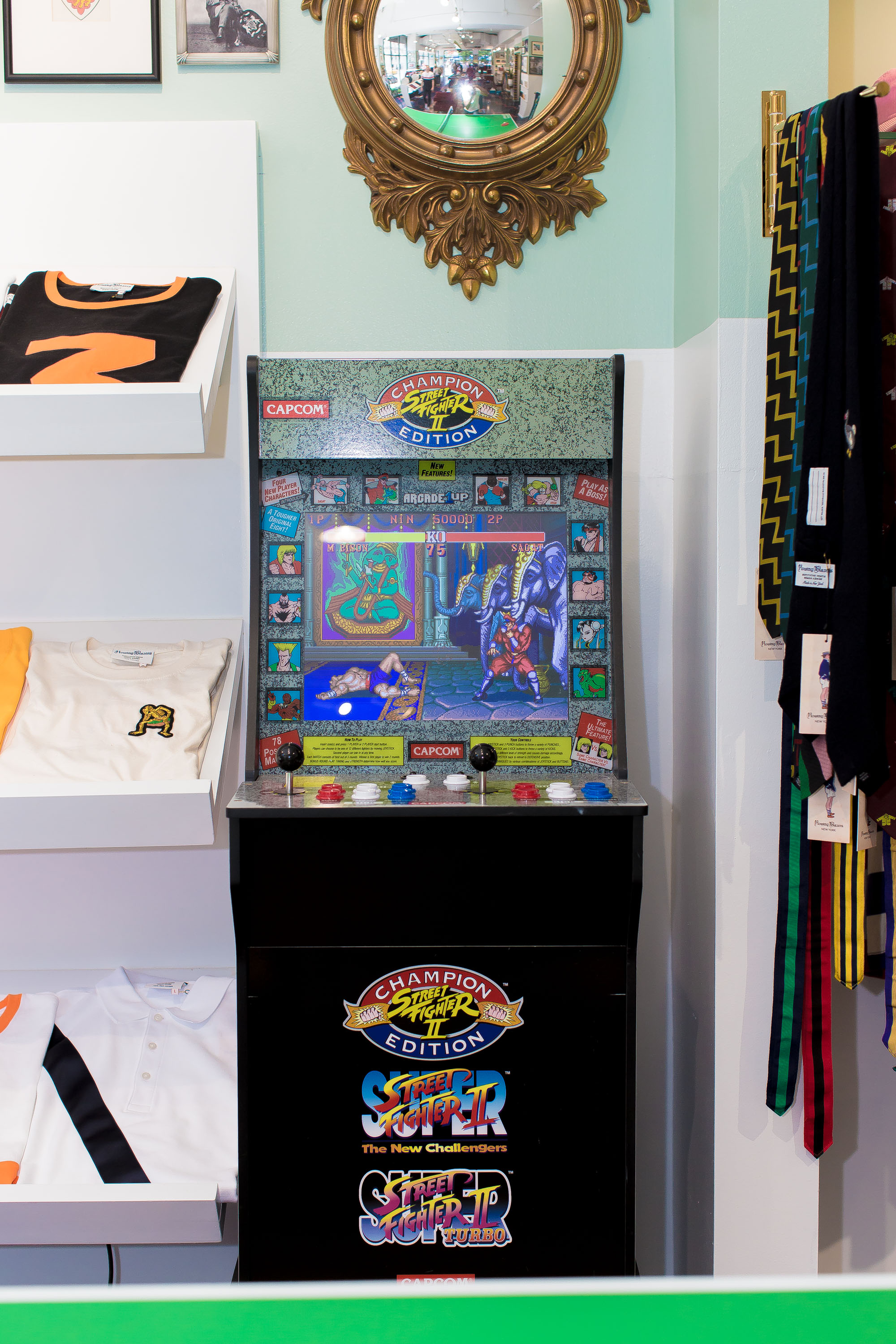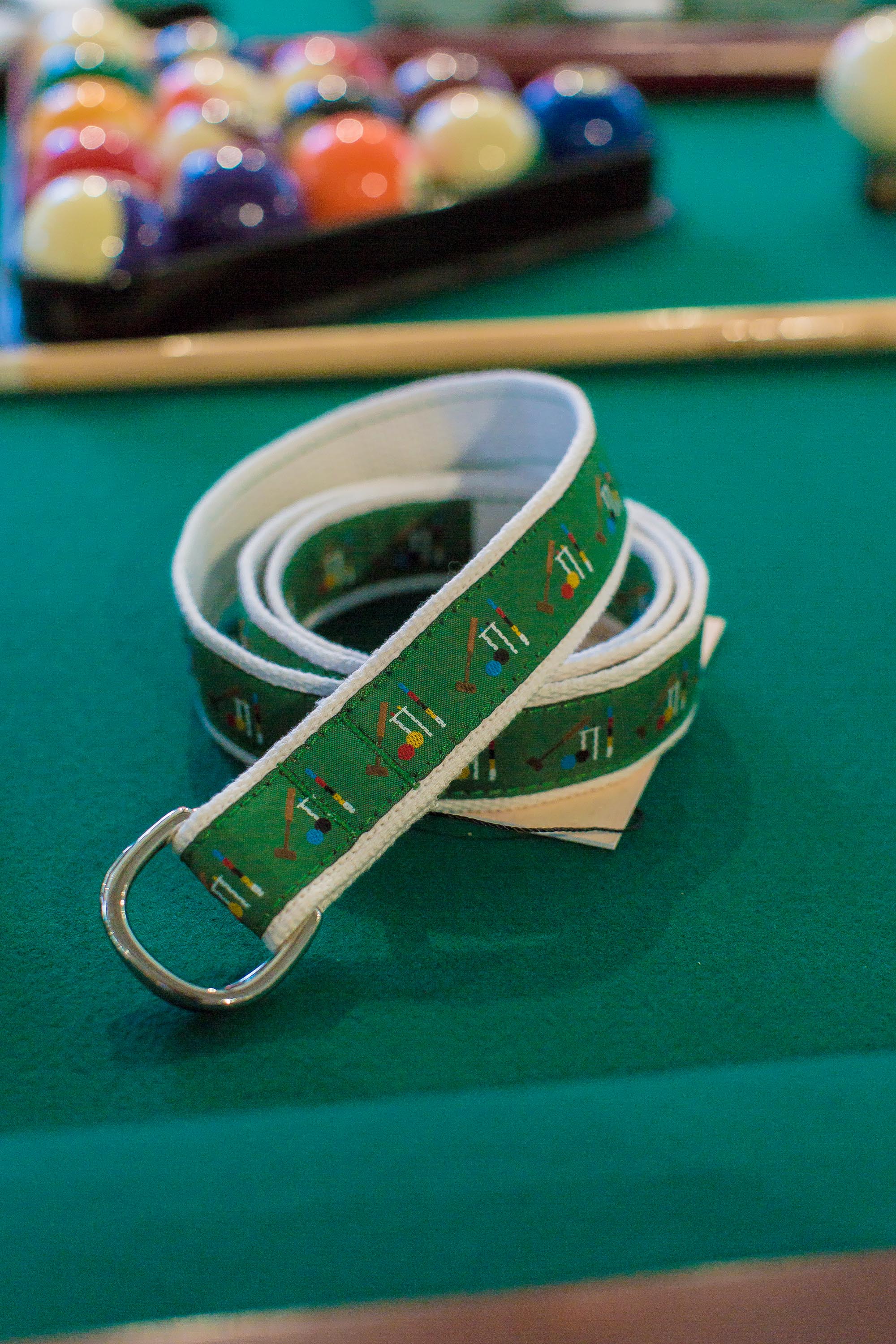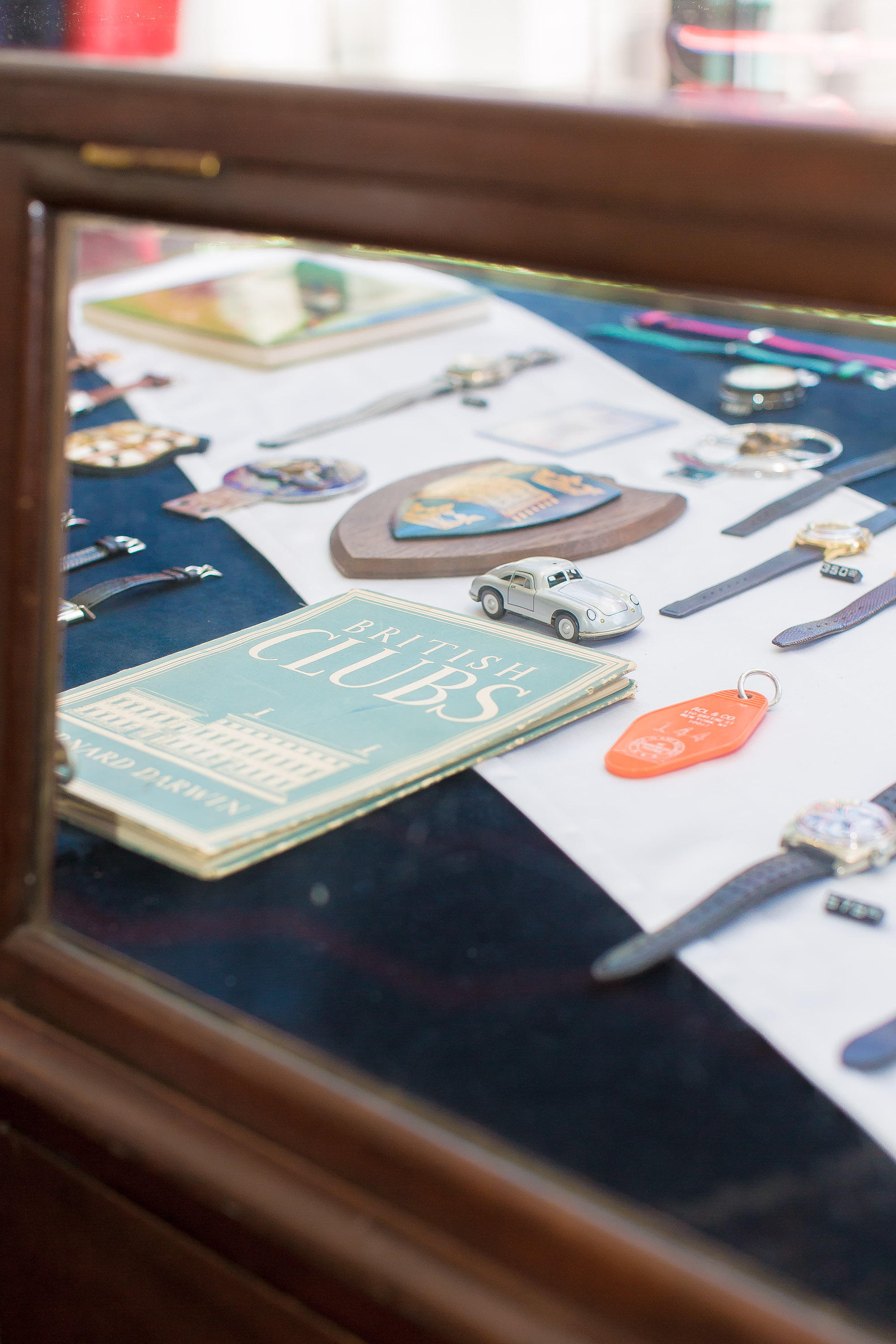Welcome to The Row Life Club: Jack Carlson and Keziah Beall of Rowing Blazers
Club life includes table tennis at Rowing Blazer.
Words and Photographs by Cassell A. Ferere
As I am seated in an illustrious, academia of collegiate sporting – boutique store, the setting becomes reminiscent of a particular bar I frequented during my stay in Paris earlier this year. Nestled on the corner of Grand and Centre Street in Lower Manhattan, the vintage décor induced me to uncover its nostalgic charm. Looking around, I couldn’t help notice a large book; flipping through the pages of classic American style and the sport of Rowing, I take note of its queues. Born from the flannel jacket – named after the red coat first worn by the Lady Margaret Boat Club, the “Blazer” is deep-rooted in Cambridge and Oxford.
Rowing Blazers book on sale at store.
The stores’ theme is set in peak of collegiate culture.
The stores’ theme is set in the peak of collegiate culture.
Author of the coffee table behemoth and founders of the clothing brand with the same name: ‘Rowing Blazers’ - Jack Carlson, and partner Keziah Beall have set up shop in New York City. Located between Soho and Little Italy, its location reflects its positioning in fashion. Straddling the line between streetwear and as Keziah put it, “the school-boy” prep, its founders are avoiding the labels and focusing on the authenticity. With a youthful vision for this old-world style, it’s an ambidextrous approach to applying their strokes to the industry. While both being top competitors in the sport of Rowing, they are seeking similar recognition in the fashion world.
Jack grew up in Boston and spent some of his youth in London. He had the opportunity to go back across the pond through his athletic and academic talent. While rowing as a 2-year master’s student, alongside the Social Network famed Winklevoss Twins, he continued to receive his doctorate at Oxford, England. Studying archeology, Jack found a passion, particularly in art history, stating; “I think it plays into my interest in aesthetics. You can find some common threads there.” He was galvanized at the omnipresent blazer wearing culture, so much, he wrote the aforementioned book about the fashion and culture of Rowing.
Keziah Beall
Keziah, born and raised in Seattle, where agreeably “normcore” is the described style, found her experience at the University of Virginia to be an introduction to an American version of this collegiate style. Pointing out the “boys wearing chinos– bowties; women wearing Lilly Pulitzer”, spending three years pursuing the national rowing team after undergrad. Both were exposed to a sartorial world that unfolded and, ultimately, threaded their perspectives before building their brand.
In 2016, the two met in Boston as fellow rowers. Jack was training for the Olympics at the time, while Keziah was training for the nationals. Today they head up a brand built on the history and prestige of the boating sport.
Different styles of blazers offered.
A designed inspired to coordinate with the Eric Emanuel collaboration.
Originally, the two thought they would launch a direct to consumer brand, locally sourcing and producing their blazers and rugby shirts in New York. But the demand grew. In 2017, they had an idea for a pop-up storefront. They found a spot in on Rivington Street, only a couple hundred square feet. They got the keys at 3 pm the day before, having to set up shop by 11 am the next day. Spending the entire night decorating the space with art and furniture from their home, Jack and Keziah were determined.
A line formed outside, about “10:49 am” Jack remembers. What they thought were people waiting for Morgenstern’s Ice Cream next door, were customers who wanted to see and feel the Rowing Blazers brand, in-store for the first time. One of the first customers happened to be Hip-Hop Artist, Vic Mensa. This was one of the key takeaways on the temperature of the Rowing Blazers brand for Jack and Keziah.
Jack believes that the customer is well informed and underestimated; “It’s 2019! People are a lot more aware and a lot smarter than big brands give them credit for.”
“If they’re living in New York City, they’re probably aware of Noah; A.L.D. (Aimé Leon Dore); they probably read Hypebeast or Highsnobiety, now and again.”
Rowing Blazers stickers sit atop a countertop just over the Ol’ Dirty Bastard cassette tape.
They took pride in transcending the normative connotation of blazer-wearing and Rowing culture, tapping into a streetwear market. This is similar to what Ralph Lauren did in the ’80s and ’90s, creating a subculture for the POLO brand, like the infamous Lo-Life Crew of Brooklyn, NY, who sought exclusively to bring that style to the urban scene. No one could have thought that a brand based around the prestige of an equestrian sport, would cross over onto those who weren’t essentially exposed to that world. It was groundbreaking!
Jack agrees; “Like, all this ‘stuff’ (I refer you to Devil Wears Prada) is much more intermingled, anyway.”
“Especially in New York City - people who live here; they’re seeing it in street style.” Keziah refers to the organic culture of New York street style.
Breaking strides into fashion, Jack and Keziah saw an opportunity to expand on their vision and the culture of Rowing to garner a new customer, apart from their usual financier or Wall Street banker. Keziah notes, “We’re using real experiences to become the brand narrative – not in an exclusive way. I think there is an authenticity to our story that is kind of appealing.” I’d have to agree.
Keziah contemplate the future of her brand
“We’re using real experiences to become the brand narrative – not in an exclusive way. I think there is an authenticity to our story that is kind of appealing.”
- Keziah
Since that first pop-up, and now opening the official flagship on 161 Grand street, Rowing Blazers are staying the course, true to their brand aesthetic. While remaining traditionalist, producing 50 and 60-year-old blazer designs for prestigious institutions, like; U.S. National Team, USA National Rugby Team, New York Rugby Club, New York Athletic Club, Cambridge University Rugby Union Football Club and the Oxford Brookes University Boat Club; they have collaborated with the brands from Noah to J. Crew, to Eric Emanuel; artist like Luke Edward Hall, as well as Harrys New York Bar, located in Paris, to name a few.
Plush sweatshirts and hoodies.
Keziah shows off her ping-pong skills.
“The reason why I think it’s gotten the attention that it has; it feels real because it is real. A lot of people purchase based on nostalgia,” Keziah mentions. They want to do things that feel right for the brand and Jack tends to go with his gut, “We think Harry’s Bar’ is cool, but we also think, collaborating with J. Crew was cool.”
“We’re just going to keep doing what we feel is cool or what we feel is on-brand for us or what we're interested in. And the more we do that and the less we do this sort of, algorithms and deep analysis, the more it’s going to preserve the integrity of the brand.”
Comment and let us know what's on your PAGE.
Featured






























Water management plays an essential role in maintaining the safety and stability of a home.